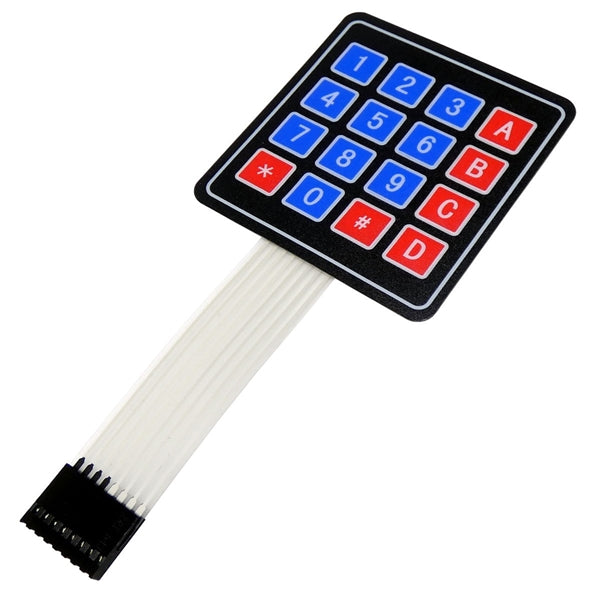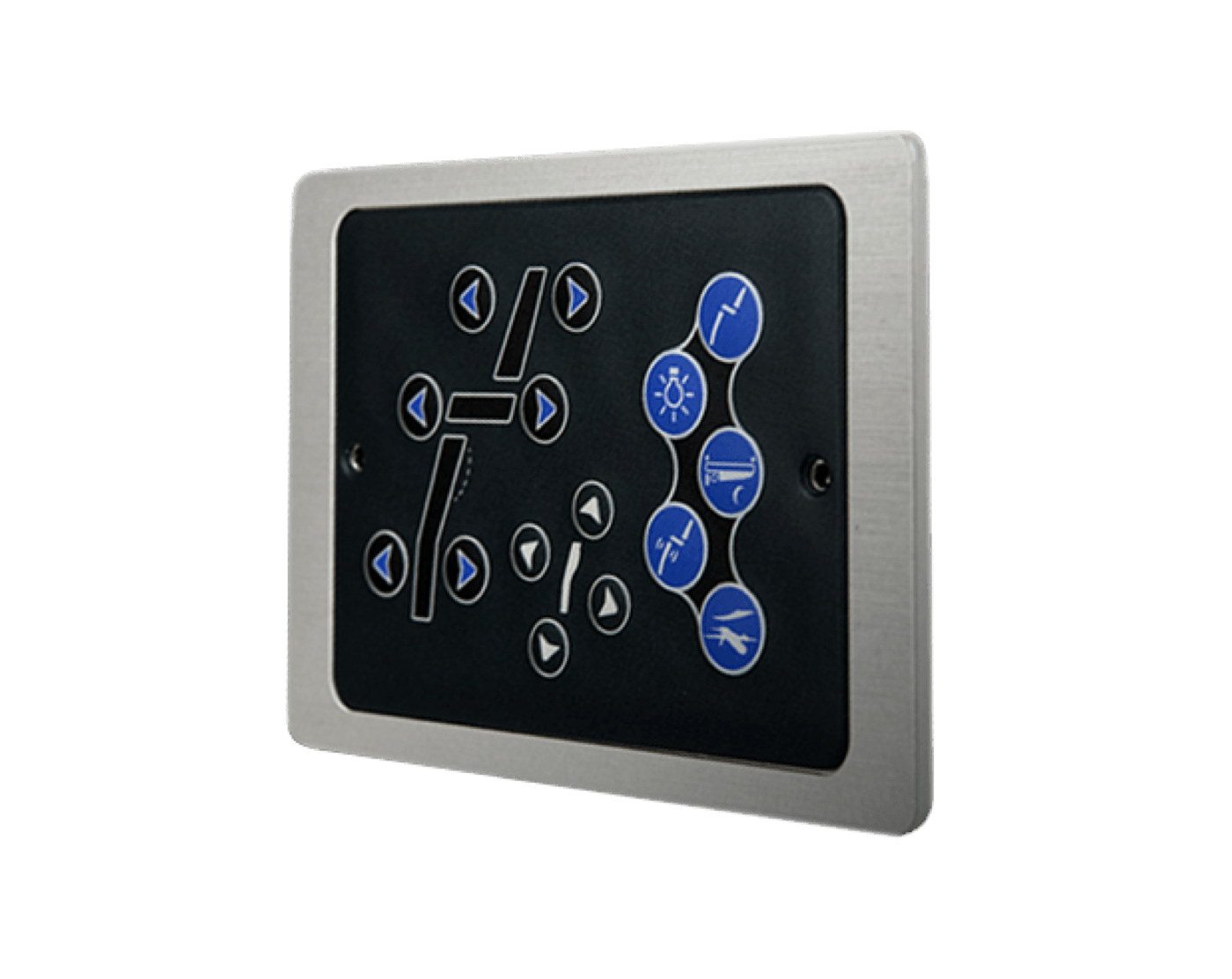A reputable membrane switch manufacturer delivers both sample and mass production options.
A reputable membrane switch manufacturer delivers both sample and mass production options.
Blog Article
What to Try to find When Picking a Membrane Switch Over for Your Task
When you're choosing a membrane switch for your project, several essential factors come into play. You'll require to assume about the materials, style, and how well it aligns with your brand name.
Recognizing Membrane Layer Switch Over Components
When you plunge into the globe of membrane switches, it's vital to comprehend the essential parts that make them work. The switch usually consists of 3 major layers: the visuals overlay, the spacer layer, and the circuit layer. The graphic overlay offers the visual user interface, presenting switches and signs you require for simple navigation. Under that, the spacer layer guarantees there's adequate range between the circuit and the overlay, allowing the button to trigger without consistent stress.
The circuit layer, frequently made from printed conductive inks, produces the electric paths. When you push a switch, the circuit closes, sending a signal to the tool. Comprehending how these layers collaborate aids you select a membrane switch that's trusted and fits your job demands. Pay close focus to the thickness and material of each layer, as these aspects affect resilience and capability in various atmospheres.
Material Option and Its Impact
Selecting the ideal materials for your membrane layer switch can greatly impact its efficiency and long life. The choice of substratum, usually polyester or polycarbonate, influences toughness and adaptability. Polyester is extra abrasion-resistant, while polycarbonate supplies far better quality and toughness.
Following, think about the adhesive. It needs to withstand environmental factors like dampness and temperature level modifications. A solid sticky guarantees that your membrane button stays intact gradually.
Don't forget the graphic overlay. The printing technique used, whether silkscreen or digital, affects the switch's aesthetic appeals and durability. Premium inks will resist fading and scratching, keeping a professional appearance.
Lastly, believe regarding ecological problems. If your tool will be exposed to harsh chemicals or extreme temperatures, pick products created to endure these obstacles. Your choices in products will eventually determine the button's reliability and customer fulfillment.
Design Factors To Consider for Individual Experience
Picking the best materials lays the foundation for an effective membrane button, but the layout likewise plays a significant function in user experience. You'll wish to reflect on just how the layout influences functionality (membrane switch manufacturer). Keep switches and symbols user-friendly and well-spaced, making it very easy for individuals to navigate without complication

Shade and comparison are also necessary; guarantee that your style is visually appealing however still practical. High contrast aids users quickly recognize buttons, particularly in low-light problems.
Lastly, mirror on the overall aesthetic. A smooth and modern-day design can boost customer perception and make your item more attractive. Stabilizing functionality with an engaging style will certainly bring about a much better individual experience and eventually, a much more effective product.

Ecological Variables and Resilience
When choosing a membrane switch, you need to think about how it'll perform in numerous settings. Variables like temperature level resistance, dampness and chemical exposure, and mechanical wear can significantly affect its sturdiness. Recognizing these elements will help you pick a switch that stands up to your specific conditions.
Temperature Resistance Needs
As ecological conditions can vary widely, recognizing temperature level resistance is crucial for ensuring the longevity of your membrane layer switch. You need to review the temperature level variety in which your device will certainly operate. Heats can create products to deteriorate, leading to failing, while low temperature levels could make parts fragile and vulnerable to fracturing. Ensure to check the specifications of the materials used in the button, like the adhesive and overlay, as they straight effect efficiency. It's additionally smart to contemplate possible temperature level fluctuations and their results on the switch's integrity. By choosing a membrane layer switch with adequate temperature resistance, you'll boost its life expectancy and keep performance in challenging environments. Choose carefully to prevent pricey replacements down the line.

Wetness and Chemical Direct Exposure
Wetness and chemical direct exposure can substantially impact the efficiency and durability of your membrane button, so it's crucial to comprehend the environment in which it will be utilized. If your job includes high humidity or direct exposure to liquids, try to find protective coverings and sealants that can enhance resistance to moisture. Furthermore, think about the kinds of chemicals your button may encounter. Specific materials can deteriorate when subjected to solvents, oils, or extreme cleaners. Choosing the best materials, like polycarbonate or polyester, can help resist these components. Constantly consult the supplier's specifications for chemical compatibility to ensure your membrane layer button maintains its performance over time. By prioritizing wetness navigate to this site and chemical resistance, you can boost the toughness of your button in difficult settings.
Mechanical Damage
While you may focus on features like aesthetic appeals and performance in your membrane switch, mechanical damage can substantially influence its efficiency with time. Think about just how usually the button will be used and the setting it'll be in. Frequent pushing can lead to destruction of More Info materials, creating problems like responsive comments loss or perhaps change failure. Seek models with durable styles, such as those with protective overlays that resist scratches and wear. Additionally, check for specifications on cycle life, which suggests the amount of presses the button can handle before revealing indicators of wear. Choosing a long lasting button guarantees durability and integrity, preventing expensive substitutes and downtime in your project. Always aspect in resilience along with aesthetic appeals and capability for peak efficiency.
Modification Options for Branding
When it involves branding your membrane layer button, customization options are crucial. You can select style aspects and shades that mirror your brand name, together with specific logo positioning and dimension to boost exposure. In addition, picking the appropriate materials and textures can boost the general look, making your item stick out.
Style Components and Shades
A vast range of layout elements and colors can make your membrane layer button not just practical yet also visually attractive, boosting your brand identity. Do not neglect about structures; including a responsive element can enhance customer experience and make your button stand out. By thoughtfully selecting style elements and colors, you not only develop an item that looks excellent yet also reinforces your branding regularly and properly.
Logo Placement and Size
After completing your style components and shades, the next step is to concentrate on logo positioning and dimension. Your logo design is an important facet of your branding, so you'll desire it to stand apart without overwhelming other style components. Show on where your logo will certainly be most visible and impactful; typical positionings include the top or center of the button.
Do not forget to contemplate just how the logo lines up with individual interaction. This interest to detail will certainly boost both performance and brand name identity in your project.
Product and Texture Choices
Picking the appropriate materials and textures for your membrane layer button can considerably boost both its capability and visual appeal. You'll want to assess alternatives like polyester or polycarbonate, as they offer durability and resistance to use. The texture of the surface likewise plays a necessary duty; smooth finishes offer a streamlined appearance, while textured surfaces can improve grasp and responsive responses.
Customizing the products and structures permits you to reflect your brand identification properly. You may choose a matte coating to share class or a shiny appearance for a contemporary touch. Don't forget shade choices, as vivid tones can make your switch stick out, while soft tones can create a more sophisticated look
Price vs. High Quality: Locating the Right Equilibrium
When you're handling the alternatives for membrane buttons, balancing cost and high quality can feel frustrating. A lower-cost button could conserve you money upfront, yet website link if it compromises functionality, you could deal with higher replacement expenses later on.
Look for manufacturers that offer a good mix of cost and high requirements. Research study their track record and customer reviews to assess integrity. In some cases, spending a bit more in quality materials can save you from future headaches.
Likewise, take into consideration the long-lasting performance and service warranty alternatives. A slightly much more pricey switch with a solid warranty could verify to be a smarter financial investment. Inevitably, it has to do with locating that pleasant place where you satisfy your budget while guaranteeing your project's success.
Examining and Quality Control Protocols
While you could discover the best membrane switch design, ensuring its quality through extensive screening procedures is important for long-term success. Begin by confirming that the maker adheres to market criteria, such as IPC/WHMA-A -620, to assure a trusted item. membrane switch manufacturer. You'll intend to look for complete testing methods, consisting of environmental, mechanical, and electrical analyses
Ensure the buttons undertake toughness testing, replicating real-world usage to identify any possible failings. Take note of the maker's quality control process, which need to consist of normal inspections and audits.

Do not forget to request for samples and perform your own examinations to confirm compatibility with your task. Take into consideration exactly how commonly the maker updates their procedures; innovation in screening can lead to better quality. By focusing on these screening and high quality guarantee protocols, you'll raise the probability of a successful and durable membrane layer switch for your application.
Often Asked Questions
How much time Does a Membrane Layer Switch Commonly Last?
A membrane layer button normally lasts anywhere from 1 to 10 million cycles, relying on use and ecological factors. You'll wish to take into consideration your details needs to assure it fulfills your long life needs efficiently.
Can Membrane Layer Changes Be Repaired if Damaged?
Yes, you can sometimes repair membrane switches if they're damaged, however it often depends on the extent of the damages. Minor issues could be fixable, while a lot more considerable damages generally calls for replacement for correct performance.
What Are the Common Applications for Membrane Layer Buttons?
Membrane buttons are commonly made use of in home appliances, clinical devices, and automotive controls. You'll discover them in consumer electronic devices, industrial devices, and even video gaming consoles. Their flexibility makes them suitable for different customer interfaces and atmospheres.
Are There Certain Accreditations for Membrane Switches?
Yes, there specify qualifications for membrane layer buttons. Try to find UL, CE, and RoHS qualifications to ensure safety and compliance. These accreditations show the switch satisfies market requirements for high quality and environmental security.
Exactly how Do I Make Sure Appropriate Setup of a Membrane Layer Change?
To assure appropriate setup of a membrane layer switch, tidy the surface area completely, align it carefully, and apply also pressure. Comply with producer guidelines for sticky curing time to take full advantage of durability and capability.
Final thought
When choosing a membrane button for your project, keep these essential factors in mind: focus on sturdy products, emphasis on user-friendly design, and consider customization for your brand name. By very carefully examining these facets, you'll guarantee your membrane button not just fulfills your job requires but additionally improves customer experience and shows your brand name identification effectively.
Report this page